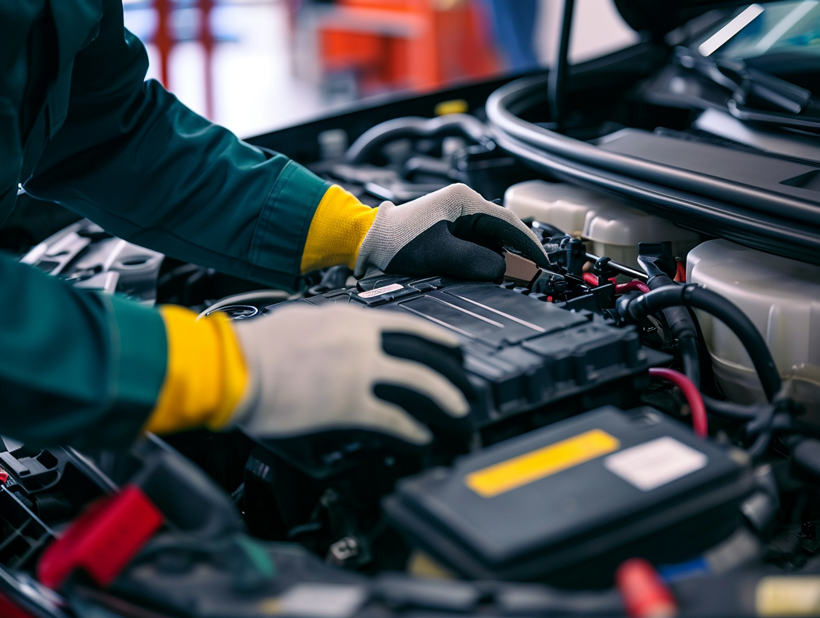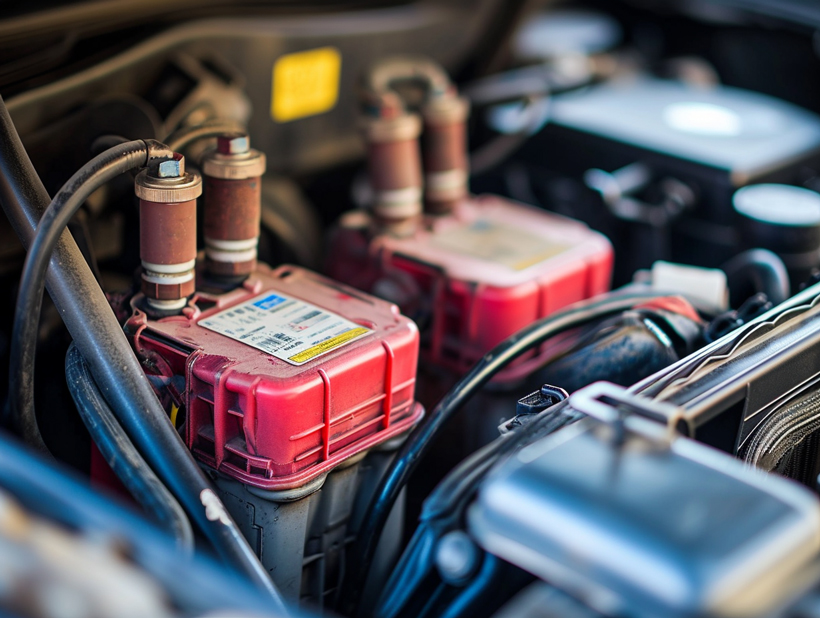Replacing your car battery can seem daunting, but it’s a manageable task that can save you time and money. I’ve swapped out my fair share of batteries and I’m here to guide you through the process. With a few tools and some safety precautions, you’ll have your vehicle powered up in no time.
Why should you replace your car battery?
Replacing your car battery is a critical maintenance task that’s often overlooked until it’s too late. As a car owner, understanding why battery replacement is necessary can save you from unexpected breakdowns and maintain your vehicle’s reliability. Let’s explore the key reasons you should consider replacing your car battery.
Performance Over Time Decreases
Over the years, my experience has shown that a car’s battery degrades. Initially, it provides the necessary startup power with ease; however, as it ages, the efficacy diminishes. The chemical reactions within the battery slow down, reducing its ability to hold a charge and provide adequate power for starting the engine.

Seasonal Temperature Changes
It’s crucial to acknowledge that extreme temperatures have a significant impact on battery life. High temperatures speed up the chemical process inside a battery, possibly leading to:
- Swollen battery casing
- Reduced battery span
- Voltage drop
In contrast, cold temperatures can increase the thickness of the battery’s fluid, making it harder for your car to start. This is especially important for those living in regions with severe seasonal variations.
Electrical System Loads
Today’s vehicles are equipped with an abundance of electrical systems – from advanced infotainment units to multiple driving aids. Each of these systems places a load on the battery. If you notice dim lights or sluggish accessory operation, it’s a clear sign that your battery might be struggling to keep up.
Routine Checks
I always advise checking your car’s battery as part of regular maintenance. A weak battery can lead to:
- Inefficient fuel usage
- Increased vulnerability to getting stranded
- Alternator overwork
These issues not only affect your daily commutes but can lead to costly repairs if not addressed in a timely manner. A fresh battery ensures that your vehicle operates at its peak performance, providing peace of mind during your journeys.
Battery Lifespan
Most car batteries are designed to last between three to five years, but this varies based on the vehicle, driving habits, and environmental conditions. Refer to your vehicle’s manual for the manufacturer’s recommendations or visit a professional for battery testing to determine the optimal replacement time.
Signs that your car battery needs replacement
Awareness of the telltale signs that indicate your car battery might be failing is crucial to avoid getting stranded. I often watch out for the following indicators and suggest you do the same:
- Engine Cranks Slowly: When turning the ignition key, if the engine takes longer than usual to start, it’s a hint that the battery’s performance has dropped.
- Check Engine Light: This light can signal various issues, but a weak battery is often one of them, especially if accompanied by slower engine cranks.
- Bloated Battery Case: A battery swelling up is a surefire sign of a dying battery, generally due to excessive heat deteriorating the battery integrity.

In addition to these, several other signs shouldn’t be ignored:
- Electrical Issues and Dimming Lights: A car battery supplies power to all the electrical components. If you notice flickering lights or electrical features not operating at full capacity, it might point to a weakening battery.
- Corroded Connectors: Look for an ashy substance on the metal parts of your battery terminals. Corrosion can lead to voltage issues and difficulty in starting the car.
- Old Age: If your battery is approaching the three to five-year mark, it’s time to keep a close eye on its condition and performance.
Monitoring these signs ensures that I‚Äôm one step ahead in maintaining my vehicle‚Äôs reliability. Routine checks play a vital role here. I use a multimeter to check the voltage levels of my car battery, keeping an eye out for readings below 12.4 volts, indicating it’s time for a closer inspection or possible replacement.
For a visual guide, here’s a brief table with key voltage readings and their interpretation:
| Voltage Reading | Condition |
|---|---|
| 12.6V and above | Healthy battery |
| 12.4V | Fair condition |
| Below 12.4V | Charge or replace |
| Below 12.0V | Battery’s dying |
By keeping an eye on these signs and conducting timely checks, I keep my car in optimal condition, ensuring that a dead battery won’t disrupt my routine or travel plans. Remember, a car battery’s needs can vary depending on its make, model, and the climate in which you drive, but these guidelines provide a solid foundation for most vehicles.
Preparation before replacing your car battery
When I’m gearing up to replace my car battery, I know that taking the right steps beforehand can make the process smoother. Here’s a rundown of the preparations I make every time:
- Safety First: I always ensure I’m on a flat surface, with the car turned off and the keys removed from the ignition. I wear safety goggles and gloves to protect my eyes and skin from any corrosive materials.
- Tool Gathering: Having the correct tools on hand is crucial. Here’s what I keep in my toolkit:
- Photographs and Labels: To make sure I reconnect everything correctly, I take a few pictures of the battery setup before disconnecting anything. If needed, I’ll label the cables with masking tape.
- Terminal Removal Order: I always start by disconnecting the negative terminal followed by the positive. This reduces the risk of a short circuit.
- Cleaning the Connectors: Before installing the new battery, I clean any visible corrosion with my wire brush. If residues are tough, a mixture of baking soda and water does the trick.
- Checking for Damage: It’s essential to look for any damage to the battery tray or hold-down clamps. The new battery needs to sit flat and be secure.
I make sure to have all the necessary preparatory steps covered before proceeding with the actual replacement. This way, I minimize the risk of any issues popping up during the process.
Step-by-step guide to replacing your car battery
Replacing a car battery might sound daunting, but it’s definitely manageable with a little know-how. Prepare your workspace and gather your tools before diving into these detailed steps.

Disconnecting the Old Battery
- With the engine off and parked on a level surface, pop the hood.
- Starting with the negative terminal, use a wrench to loosen the bolt. You’ll want a firm grip to avoid slipping.
- Carefully lift the negative cable away from the battery, ensuring it doesn’t touch anything metal.
- Repeat the process for the positive terminal, making sure to keep the cables separate.
Removing the Old Battery
- Unscrew the battery hold-down clamp with the appropriate tools. This could be a clamp across the battery top or a bracket at the base.
- Once freed, use a battery carrier or careful hand placement to lift out the heavy battery. Avoid tilting to prevent any acid spills.
Installing the New Battery
- Lower the fresh battery into the tray, aligning it with the hold-down clamp or bracket.
- Secure the battery in place, ensuring it’s snug and doesn’t wobble.
- Use a wire brush to clean any corrosion from the cable connectors if necessary.
Reconnecting the Cables
- Attach the positive cable to the positive terminal and tighten securely without over-tightening.
- Follow with the negative cable, ensuring solid contact without overtightening.
- Give each cable a gentle tug to make sure they’re properly attached.
Finally, start your engine to check if the battery installation is successful. Watch for the proper functioning of electrical components and be ready to check connections if there are issues.
Remember, a correctly replaced battery not only improves reliability but also ensures your vehicle operates at peak performance. Patience and attention to detail are key when handling car maintenance tasks like this. With the right approach, you can enhance longevity and save yourself the expense and time of a professional mechanic’s service. With every step, safety should remain a top priority to prevent damage to your vehicle or injury to yourself.
Safety tips for replacing your car battery

When it comes to replacing your car battery, safety isn’t something to gamble on. I’ve learned over the years that taking a few precautionary steps can make a significant difference in ensuring a smooth and secure process. Here are some safety tips that’ll keep you protected while you work:
- Wear Protective Gear: Before you start, make sure you’re wearing safety glasses and protective gloves. Batteries contain sulfuric acid which can be harmful upon contact with skin or eyes.
- Turn Off Your Vehicle: Ensure your car engine is completely turned off before attempting to replace the battery.
- Avoid Open Flames: Car batteries emit flammable gases, so it’s crucial to keep sparks, flames, and cigarettes away from the battery.
- Check for Corrosion: Inspect the battery terminals for any signs of corrosion. If there’s substantial buildup, it’ll need to be cleaned off carefully to prevent any damage to your skin or vehicle.
- Remove Personal Metal Items: Take off any jewelry or metal accessories that could potentially cause a short circuit when working with your battery.
- Properly Ventilate the Area: Work in a well-ventilated space to avoid inhaling any harmful gases that the battery may emit.
- Correctly Identify Terminals: It’s important to recognize the positive (+) and negative (-) terminals to avoid any risk of shock or short-circuiting.
- Keep a Neutralizing Agent Handy: If acid spills, it’s wise to have a mixture of baking soda and water nearby to neutralize any spills.
Remember, your safety should be your primary concern when performing maintenance on your vehicle. Double-check that you have the appropriate tools on hand and that you‚Äôre working in an environment that‚Äôs conducive to safety. Being prepared isn’t just about having the right equipment; it’s also about managing risks and anticipating potential hazards. It’s the mindset that separates cautious car owners from those who take unnecessary risks.
Taking the time to follow these safety instructions may seem tedious, but it beats the inconvenience of an injury or vehicle damage due to carelessness. With these precautions in mind, you’re already on track for a successful battery replacement.
Common mistakes to avoid when replacing your car battery
When it’s time to replace a car battery, many car owners might feel comfortable taking on the task themselves. I’ll walk you through some common blunders to steer clear of to make sure your battery replacement goes smoothly.

Overlooking Battery Specifications
It’s vital to get the right battery for your car. Mismatching battery types can lead to poor car performance or even damages. Make sure to:
- Check your vehicle’s manual for battery requirements.
- Match the group size to ensure a proper fit.
- Look for the correct cold cranking amps (CCA) rating for your climate.
Neglecting the Memory Saver
Replacing a battery without using a memory saver could reset your car’s computer and radio settings. This device simply plugs into your vehicle’s OBD-II port, storing all electronic settings while the battery is disconnected.
Forgetting to Inspect and Clean
It’s not just about inserting a new battery; it’s also about maintaining the battery area. Always:
- Clean the battery tray to prevent corrosion.
- Inspect the cables for wear or damage.
- Tighten all connections to avoid power loss.
Ignoring Torque Guidelines
Overtightening clamps and connections can damage battery terminals and cables. Conversely, undertightened terminals can create poor connections. Both issues can lead to starting problems or short circuits. Refer to your vehicle manual for the correct torque specifications.
By avoiding these common mistakes, you’ll help ensure your car’s electrical system operates reliably with its new battery. Remember, taking the time to do the job right can save you time and money in the long run. Always prioritize your safety and follow the manufacturer’s instructions every step of the way.
